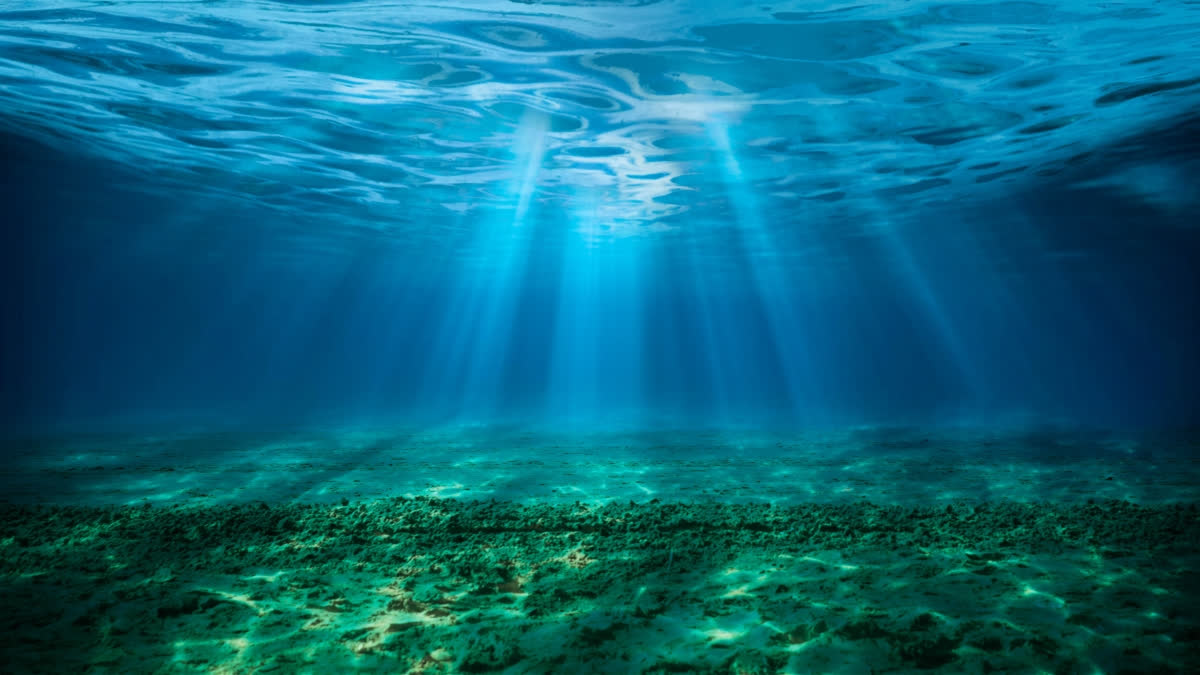New Delhi: India's decision to sign the UN High Seas Treaty during the General Assembly’s 79th session in New York next month can be seen as a significant signal by New Delhi to join international marine ecosystem conservation efforts. Speaking at the inauguration of a two-day workshop in Chennai on Tuesday, PK Srivastava, Advisor to the Union Ministry of Earth Sciences, said that a dedicated established mechanism will be established to oversee the developments regarding the Treaty.
"This authority will deal with the necessary regulations, studies, and other activities related to the treaty," Srivastava said, emphasising that there is a need for detailed discussions and modification to existing legislation to ensure compatibility with the requirements for the effective implementation of the treaty.
The Environment Protection Act 1986 could be used for the environmental impact assessment of the Treaty, he said. Last month, the Union Cabinet approved India’s ratification of the Treaty.
The UN High Seas Treaty is one of three agreements under the UN Convention on the Law of the Sea (UNCLOS). The other two are the 1994 Part XI Implementation Agreement (which addresses the exploration and extraction of mineral resources in the international seabed area) and the 1995 UN Fish Stocks Agreement (which addresses the conservation and management of straddling and highly migratory fish stocks).
What is UNCLOS?
The 1982 UNCLOS, which came into force on November 16, 1994, is an international treaty that provides a regulatory framework for the use of the world’s seas and oceans, inter alia, to ensure the conservation and equitable usage of resources and the marine environment and to ensure the protection and preservation of the living resources of the sea. UNCLOS also addresses such other matters as sovereignty, rights of usage in maritime zones, and navigational rights.
What is the UN High Seas Treaty?
The high seas, defined as areas of the ocean beyond national jurisdiction, account for 64 per cent of the ocean’s surface and nearly half of the Earth’s surface. Despite their ecological importance, these areas have been largely unregulated, with a patchwork of international agreements governing specific issues like fishing and pollution but no comprehensive framework for managing biodiversity. This lack of regulation led to overexploitation of resources, habitat destruction, and threats to marine species, many of which are still poorly understood.
In 2017, the UN General Assembly voted to convene an intergovernmental conference to consider establishing an international legally binding instrument on the conservation and sustainable use of biodiversity beyond national jurisdiction. This was considered necessary because the UNCLOS did not provide a framework for areas beyond national jurisdiction. There was a particular concern for marine biodiversity and the impact of overfishing on global fish stocks and ecosystem stability.
The UN High Seas Treaty, also known as the Biodiversity Beyond National Jurisdiction (BBNJ) Agreement, is a landmark international accord aimed at protecting and sustainably managing marine biodiversity in the high seas. The text was finalised during an intergovernmental conference at the UN on March 4, 2023, and adopted on June 19, 2023. Both states and regional economic integration organisations can become parties to the treaty.
What are the issues that the UN High Seas Treaty addresses?
The treaty basically addresses four main issues: marine genetic resources (MGRs) and their digital sequence information, including the fair and equitable sharing of benefits; area-based management tools (ABMTs), including marine protected areas; environmental impact assessments (EIAs); and capacity building and transfer of marine technology (CB&TMT).
What are MGRs?
MGRs, including the fair and equitable sharing of benefits, comprise the first element mentioned in the Treaty. Among other things, marine genetic resources can enable production of biochemicals that can be used in cosmetics, pharmaceuticals and food supplements. The economic value of the resources is for now unclear, but the potential for profits has created an increased interest in the resources exploration and exploitation among stakeholders.
During the UN negotiations it has been a contentious point whether or not marine genetic resources should apply to 'fish' and 'fishing activities'. If not, it would be likely to impact the ability of the High Seas Treaty to address its objective, since fish are a major component of marine biodiversity and play an essential role in the functioning of marine ecosystems, according to some experts. However, the final Treaty text states that the provisions about marine genetic resources do not apply to 'fish' and 'fishing' in areas beyond national jurisdiction.
What are ABMTs?
ABMTs, including marine protected areas (MPAs) are recognised as key tools for conserving and restoring biodiversity. They can be used to protect, preserve and maintain certain areas beyond national jurisdiction. MPAs offer a degree of long term conservation, and are already established in some areas. However, the protection level of biodiversity varies a lot and the protected areas only cover a small proportion of the areas beyond national jurisdiction. Area-based management tools can be used for short-term and emergency measures and to address a specific sector.
What are EIAs?
Environment impact assessments have the potential to predict, reduce and prevent human activities affecting marine biodiversity and ecosystems. While the institutional and legal framework for EIAs is well established in areas within national jurisdiction, it is less developed in areas beyond. Under the treaty, participating parties are obliged to conduct EIAs when a planned activity may have an effect on the marine environment, or when there is insufficient knowledge about its potential effects. In such cases, the party possessing jurisdiction or control over the activity is required to conduct the assessment.
What is CB&TMT?
Capacity building and the transfer of marine technology concerns the equitable access to research conducted in international waters and enabling cooperation and participation in the activities outlined in the agreement. Different types of capacity building and transfer of technology are mentioned in the agreement, such as sharing of information and research results; develop and share manuals, guidelines and standards; collaboration and cooperation in marine science; and develop and strengthen institutional capacity and national regulation or mechanisms.
Technology plays an important role in the implementation, making capacity building and technology transfer essential for the enforcement of the Treaty. A key focus is to support developing and geographically disadvantaged states in implementing the agreement.
How does India stand to benefit by becoming a signatory to the UN High Seas Treaty?
Following the Union Cabinet’s approval in July this year for India to sign the BBNJ Agreement, M. Ravichandran, Secretary in the Ministry of Earth Sciences, said that it will allow India to enhance its strategic presence in areas beyond its Exclusive Economic Zone (EEZ).
"In addition to shared monetary benefits, it will further strengthen our marine conservation efforts and collaborations, open newer avenues for scientific research and development, access to samples, sequences and information, capacity building and technology transfer, etc., not just for us but for the benefit of the entire humankind,” Ravichandran said.
He further added that India signing the BBNJ Agreement "is another crucial step towards ensuring that our oceans remain healthy and resilient".



